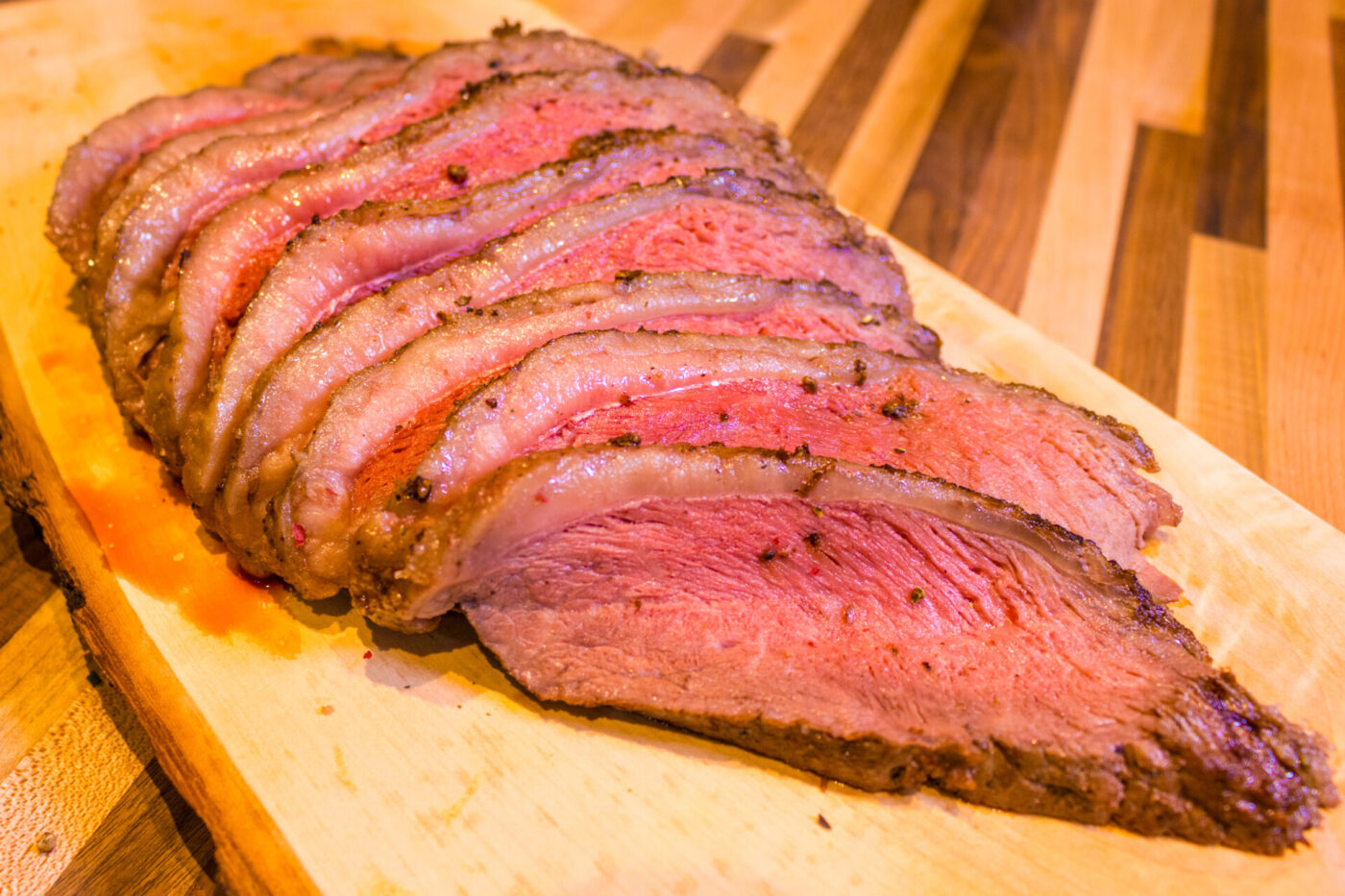Read More: Nutritional Information on Beef Top Sirloin Cap Roast Picanha
Understanding Picanha: The Cut and Its Characteristics
Picanha comes from the top sirloin subprimal, specifically the biceps femoris muscle and its overlying fat cap. The key defining feature of picanha is this thick layer of fat on one side, which is crucial to its flavor and cooking characteristics. Unlike some other cuts where fat is trimmed away, the fat cap on picanha is intentionally left intact and rendered during cooking, basting the meat and contributing to its juiciness and rich, beefy taste. The muscle itself is relatively lean, but the fat cap significantly impacts the overall nutritional profile.
Nutritional Breakdown of Beef Top Sirloin Cap Roast (Picanha), Cooked, with Fat Cap
Nutritional values will vary depending on the specific animal, its diet (grass-fed vs. grain-fed), and the precise trimming. The following information is based on a 3-ounce (85-gram) serving of cooked picanha, including the fat cap, as this is how it is traditionally prepared and consumed.
- Calories: Approximately 220-270 calories (can vary significantly depending on the thickness and rendering of the fat cap).
- Protein: 20-24 grams. Picanha is an excellent source of complete protein.
- Fat: 14-19 grams. The fat content is relatively high due to the fat cap.
- Saturated Fat: 6-8 grams. Picanha contains a significant amount of saturated fat.
- Monounsaturated Fat: 6-8 grams.
- Polyunsaturated Fat: Less than 1 gram.
- Cholesterol: 70-80 mg.
- Vitamins:
- Vitamin B12: Picanha is a very good source of vitamin B12.
- Other B Vitamins: It provides niacin (B3), riboflavin (B2), vitamin B6, and pantothenic acid (B5).
- Minerals:
- Iron (Heme Iron): Picanha provides heme iron.
- Zinc: It’s a very good source of zinc.
- Selenium: It provides selenium.
- Phosphorus: Picanha contains phosphorus.
- Potassium: It provides potassium.
Nutritional Breakdown of Beef Top Sirloin Cap Roast (Picanha), Cooked, Lean Only
If the fat cap is removed, the nutritional content is altered.
- Calories: Approximately 130-150 calories.
- Protein: 22-25 grams.
- Fat: 3-6 grams
- Saturated Fat: 1-3 grams.
- Monounsaturated Fat: 1-3 grams.
- Polyunsaturated Fat: Less than 0.5 grams.
Grass-Fed vs. Grain-Fed Picanha
- Grass-Fed: May be slightly leaner overall and have a better omega-3 to omega-6 fatty acid ratio.
- Grain-Fed: Typically has a higher overall fat content, particularly in the fat cap.
Health Benefits of Picanha (When Consumed in Moderation, with Fat Management):
- Excellent Protein Source: Crucial for muscle building, repair, and maintenance.
- Rich in Iron and B12: Helps prevent anemia and supports nerve function.
- Good Source of Zinc and Selenium: Boosts immune function and offers antioxidant protection.
Crucial Considerations and Potential Drawbacks
- High Saturated Fat Content (with Fat Cap): The primary concern with picanha, as traditionally prepared, is its high saturated fat content from the fat cap. While the fat cap contributes significantly to the flavor and juiciness, individuals with high cholesterol or heart disease should consume picanha sparingly and consider trimming some or all of the fat after cooking (to retain some of the flavor benefits during cooking).
- Calorie Density: Due to the fat cap, picanha is relatively calorie-dense. Portion control is important for weight management.
- Red Meat Consumption: While a good source of nutrients, red meat should be consumed in moderation as part of a balanced dietary pattern.
Tips for Enjoying Picanha More Healthfully
- Portion Control: Stick to a 3-ounce serving, especially if consuming the fat cap.
- Trim Fat After Cooking: While the fat cap is essential for the traditional picanha cooking method, you can trim some or all of it after cooking to reduce your saturated fat intake. This allows you to benefit from the basting effect during cooking while still controlling the final fat content.
- Choose Leaner Cuts Sometimes: Consider other leaner cuts of beef for more regular consumption.
- Grilling or Skewering: The traditional churrasco method of grilling picanha on skewers allows the fat to render and drip away, reducing the overall fat content consumed.
- Pair with Healthy Sides: Serve picanha with plenty of vegetables, salads, and whole grains to create a balanced meal.
- Infrequent Consumption: Enjoy picanha as an occasional treat rather than a dietary staple, particularly if you are concerned about saturated fat intake.
- Grass-fed: If possible, opt for Grass-fed.
Conclusion
Picanha, or beef top sirloin cap roast, is a flavorful and unique cut of beef prized for its fat cap and rich taste. While it provides excellent protein, iron, zinc, and B vitamins, its high saturated fat content (when the fat cap is consumed) necessitates mindful consumption. By practicing portion control, trimming some or all of the fat after cooking, choosing appropriate cooking methods (like grilling), and incorporating it into a balanced diet that emphasizes plant-based foods, you can enjoy the culinary delights of picanha while maintaining a health-conscious approach to eating. Understanding its nutritional profile empowers you to make informed choices that align with your individual health goals and dietary preferences.


Share
Click on the icons below to share "Title of the item to share"